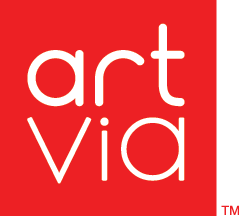GREEN is the color of nature, with calming, relaxing and refreshing effects. It has these emotive qualities: Health, regeneration, contentment, harmony, life, growth, energy, faith, and money. Green connotes fertility in women, and masculinity, conservatism and wealth in men.
It is used to create a sense of serenity. Be careful, different tones of green can do different things – for example, blue-green denotes class and restraints, but on the other hand, lime green doesn’t work well in large areas. Green is easiest on the eyes, and is a popular food color.
BLUE is the most popular color in interiors and for the graphic industry. It is proven to increase energy. Blue’s emotive qualities are often described by these words: Honesty, integrity, trustworthiness, belonging, peaceful, tranquility, justice, vigilance, and perseverance. However, blue also connotes cold, coolness, depressing, solitude and sadness. It is less effective with women than it is with men.
In web design and printed materials, avoid saturated blue, as it looks cheap, uncreative and amateurish. Ever wonder why text links are in blue? It’s because they give better results (i.e., they draw more clicks than any other color). Bordering central areas of a webpage creates a sense of expansiveness.
Blue elicits good response from budget buyers, but be careful, for it is the color of toxic foods.
Associated with calm, trust and sensitivity. It is the favorite color of millions of people. Blue can easily be paired with many other colors and is therefore a common choice in a color scheme. Common pairings include blue and white (porcelain china), blue and green (reminiscent of flowers in nature) and blue and yellow (evoking the warm sun in a bright, blue sky).
Greek mythology tells how the color of the sea was created the undulations of the long azure tresses belonging to the young ocean nymphs – the Nereids.
In the 9th century B.C. the ancient Assyrians used Blue in their frescoes derived from cobalt. Lapis lazuli, a semi-precious stone, reigned for many years as the king of blue pigments. For artists, lapis became the most beautiful and the most expensive color in their palette. Nowadays, blue is perceived as neutral and pacific color universally is associated with blue jeans, and it’s used on many international emblems and flags.
PURPLE and VIOLET are symbolic of royalty. When one sees these colors, a person thinks of royalty, luxury, wealth, dignity, sophistication, and spirituality – or in a different vein, words such as feminine, romantic, mystic, beauty, and inspiration.
Use them sparingly, because they are rare in nature and can appear artificial. They are also the color of toxic food.
Neutral Colors
BLACK is used almost exclusively for the printed word. Aside from its value in written communication, black connotes authority, power, formal, sophistication, elegance, seductiveness, and mystery. It is often associated with black magic, witches and demons, and the color implies submission and evil.
Black clothes are stylish and timeless; they make people appear thinner, but can be overpowering. They make light-haired people appear to have inner strength and determination.
GRAY is the color of executives. Take note of the walls in airports – they are usually dove gray, giving travelers a feeling of executives and business persons, or “high class.” In printed and web materials, avoid dull grays, as they appear utilitarian. Light grayish-blue helps eliminate glare.
WHITE is a summer color that reflects light. It symbolizes innocence, purity, chastity, virginity, youth, mildness, cleanliness and sterility. It goes with everything.
BROWN is a good color for gathering more information as it encourages open conversation. The color symbolizes wood or leather; light brown symbolizes genuineness. Its emotive qualities are credibility and stability, and sometimes sadness or wistfulness. It’s a popular food color.









